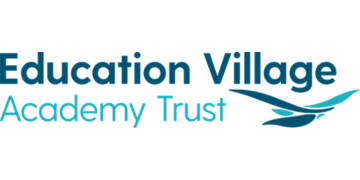A diocese will move all its 236 schools into five mega multi-academy trusts (MATs) after bishops decided that “larger is better”.
The move will include the biggest ever trust merger as six chains combine to create a 63-school MAT. It will become the second-largest trust in the country when it launches next September.
Steve Bell, the Roman Catholic archdiocese of Birmingham’s director of education, believes the changes will create “anti-fragile” trusts that will secure “the future of our Catholic schools, particularly our primaries”.
He told Schools Week: “This is about what realities exist across the country – issues like how we provide an appropriate level of support for special educational needs and inclusion.”
‘We want to put the umbrella up’
The pilot trust – dubbed CMAT1 – will see six chains and seven voluntary-aided schools absorbed. Schools will be located across Walsall, Wolverhampton, Staffordshire and Stoke.
Only United Learning, England’s biggest trust, currently has more academies.
Up to five more trusts will be set up once “the lessons of implementation” are learned from the trial run. Each will consist of more than 40 academies.
Bell thinks the trusts will each feature “regional hubs”, with primary feeders allocated to the same organisations as their secondaries.
“There isn’t anything wrong with the current system, but there’s an opportunity to work at scale to meet the needs of our children, even in the face of falling pupil rolls at primary level,” he added.
Education Policy Institute (EPI) projections suggest pupil numbers will fall by 818,000 between 2022-23 and 2032-33, following a national birth-rate slump.
The number of children in primary classrooms has been dropping from a peak of 4.7 million five years ago. Forecasts show it will drop to 4.06 million in 2028-29.
EPI believes school funding – which is based on the previous year’s pupil figures – could plunge by £1 billion nationally.
Bell added: “It will enable [primaries] to have the security of an anti-fragile system because of the scope and scale of the trusts.
“What we’re doing is recognising it could be raining in a few days and we want to put the umbrella up and make sure we are supporting each other.”
‘Larger is better’
The archdiocese had previously planned to move all its schools into 26 trusts. But archdiocese documents cite Our Lady of Lourdes in Nottingham, Lift Schools – formerly AET – and Outwood Grange as inspirations for the change.
Under the heading, “what evidence is there that larger is better?”, the papers state that “strong MATs are better able to deploy staff and funds to address particular needs in school communities”.
This includes the “development of trust-wide teaching and learning support systems”, improved “procurement through scale” and more capital funding, with CMAT1 expected to receive £5.5 million for its buildings a year.
The archdiocese also claimed that those currently in central team roles are “likely to be more secure” in their jobs as their “expertise and skills [will be needed] to run this £140 million-plus” trust.
CMAT1’s board will also “lead an external recruitment process” to appoint a chief executive. Those currently in CEO positions will “be invited to apply”. The move will not impact staff pay and conditions, with all employees “protected by TUPE”.
“We’re setting up the first one and learning the lessons along the way,” Bell continued. “We will adapt our plans as required.
“Our aim is to ensure there are significantly larger and, crucially, stronger multi-academy trusts.”
Trusts get bigger
Despite a waning push from the previous government towards academisation, trusts are getting bigger. Analysis from July shows trusts now have on average of 4.8 schools – up from 3.1 in 2019.

The number of standalone trusts has tumbled by 32 per cent, while the number of MATs has actually fallen by 1 per cent – despite the number of academies rising from 8,594 to 10,839 over the five years.
Analysis by Education Datalab found that, if the rate at which schools join MATs continues, all secondaries would be in MATs by 2031. For all schools, this would be 2041.
Hilary Goldsmith, a school business leader, believes growth is being driven by small and medium-sized trusts looking to expand.
Primary schools, in particular, are looking to make the switch as they are finding life “outside an academy trust quite a worrying place to be” amid funding uncertainties, the “threat” of forced academisation and reduced council support.
The Kreston Group of accountancy firms found this year that nearly half of trusts dipped into their reserves after racking up deficits in 2022-23. This is up from 19 per cent in 2021.














Bravo, it seems we have reinvented the Local Education Authority but removed some of the local aspect and a lot of the accountability.
I do wish they would explain exactly how a large MAT can manage falling pupil numbers any differently than a maintained or VA school. The only thing I can think is to take money from other schools to prop up smaller ones but that can be done outside of a MAT and can only ever be a temporary fix for a long term problem.
God help all the staff, Amen.